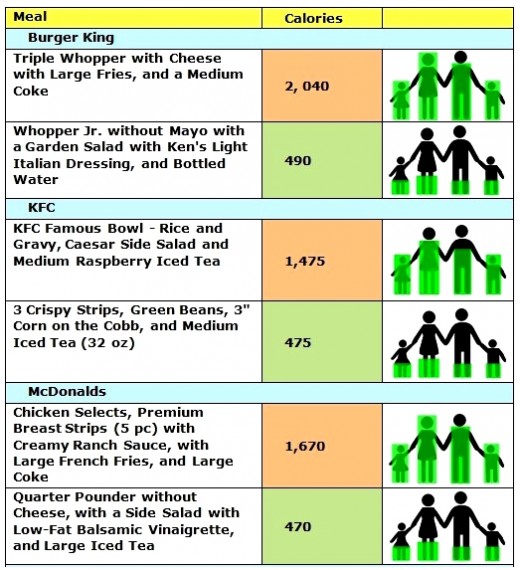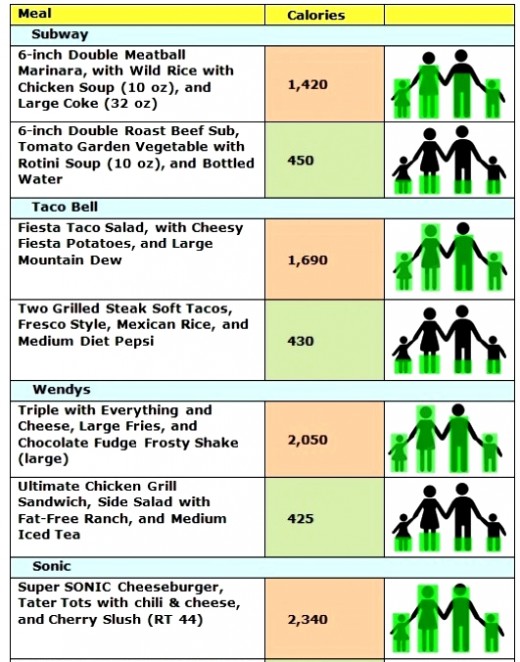Food Industry Babel Blocks Food Labels Needed to Fight Obesity
There is an interesting parallel between smoking as the cause of lung cancer and other health problems, and processed food as the cause of the obesity epidemic. Similarly there parallel between the campaign to stop smoking using enforced health warning on cigarette packets and the campaign to introduce warning labels on foods that have high level of calories and fat. The tobacco companies have fought 'tooth and nail' to block anti-smoking campaigns and the food processing industry is doing the same thing.
Effective food labels should warn people of the 'dangers' of eating certain foods that contain high levels of fat and added sugar. Foods and meals that have very high calorie contents in relation to the average daily allowance should also be labelled with a warning. The concept is that these foods should be only eaten as an occasional treat, and consumers be warned of the dangers of eating too much of these food.
Various consumer groups and medical organisations have pushed for these warnings which in effect amount to "The Good, The Bad and The Ugly" concept. However the food industry throughout the world has spent billions of dollars blocking attempts to introduce these type of labels and has developed its own labels which like the Tower of Babel has led to confusion and misinformation.
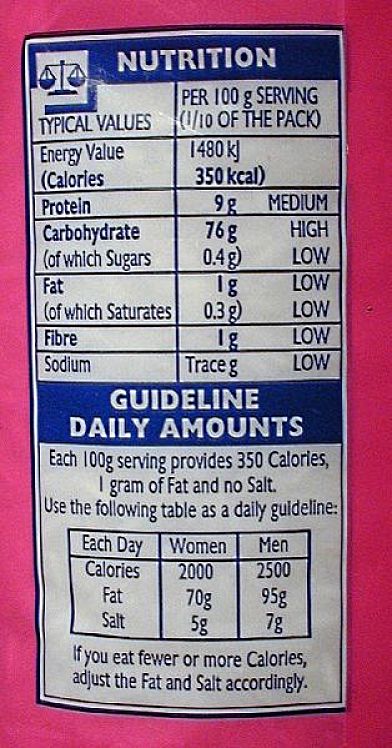
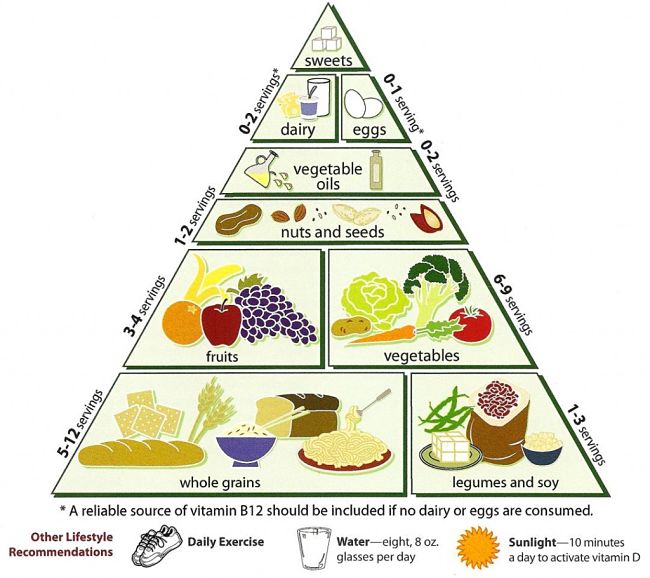
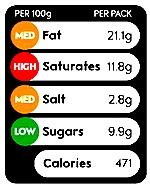
Perhaps the best known system are the Traffic Light labels are used voluntarily in British, where several supermarket chains use them on various home brand foods. Attempts to make these labels compulsory in Britain, the EU, Australia and the US have been blocked by intense lobbying campaigns against them by the food industry which has spent billions of dollars and Euros to block these labels.
These labels show consumers an instant signal of a food’s content for four key areas which require moderation. For example the salt content is low when green, moderate when its light is amber, high when it's light is red. Similar traffic lights are provided for fat, saturated fat and sugar. The colours are based on total contents in grams per 100 mL or 100 gm per servings, with boundaries set and the foods monitored regularly for compliance. The criteria are shown below.
Food Producers are naturally totally against anything that puts red lights on any of their labels, or that gives competitive advantage to healthy alternatives. However the seriousness of the obesity epidemic may mean that similar 'warning' labelling systems will be imposed on the food industry. In some ways there are parallels with anti-smoking campaigns that forced warning labels to be printed onto cigarette packets. The fight against the obesity epidemic must begin with effective warning labels on foods.
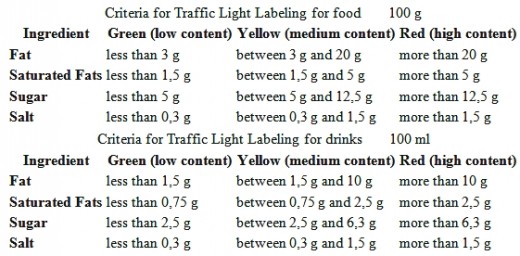
The food industry has developed its own labelling system which comes in various forms which is much more complicated and some would argue was a Babel approach designed to confuse and mislead.
Facts Up Front
One such system is the so-called 'Nutrition Keys' label system based on key nutrients that need to be monitored and avoided in excess, but also includes two "good outcome" nutrients. This system developed by the food industry is now called 'Facts Up Front'.
The industry has argued that consumers have demanded easy and simple advice and information that they can interpret and use themselves, and that the consumers themselves should be trusted to make their own decisions rather than have government dictate what they should and should not eat by using warning labels.
Daily Intake Guide
The Daily Intake Guide system is based on Percentage Daily Intake: It shows the amount of energy, protein,saturated fat, carbohydrate,fat, sugars, and sodium per serve and what these amounts represent as percentages of daily intake for these components. For eaxmple,if a Daily Intake Guide shows the saturated fat content as 15% DI,you will have consumed 15% of yourrecommended daily intake of saturated fat for each serving. Daily Intake estimates are based on that required for an average adult.
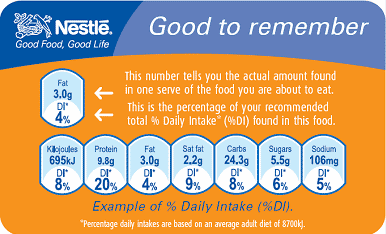


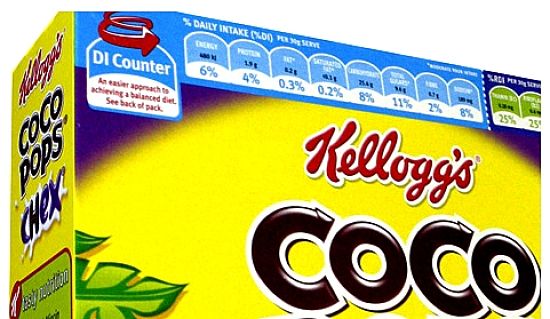
How do the Systems Compare?
The figure shown below illustrates how low, medium and high sugar food would be displayed on various products to example consumers to make healthy choices
Which provides the simplest identification of health choices in your opinion ?
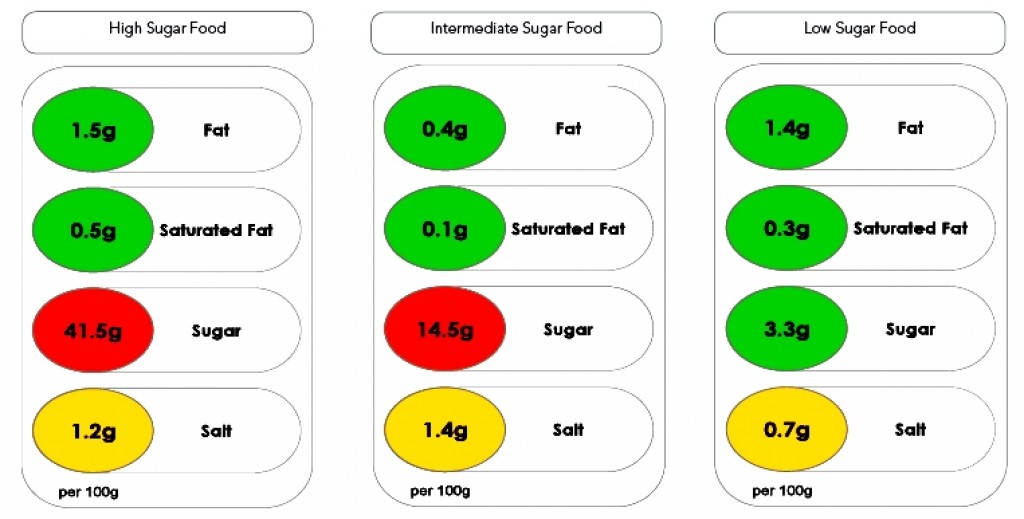
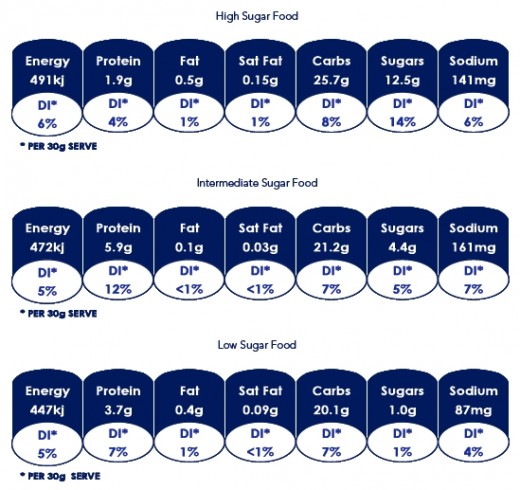
A survey commissioned by Australian health and consumer groups including Choice, The Cancer Council Australia and the Obesity Policy Coalition, compared shoppers response to Daily Intake Labelling and Traffic Lights Labels. The study, found that about 80% of consumers in the survey felt they could use traffic light label to easily identify healthy foods and about 65% reported they could accurately interpret the Daily Intake Labels. The study also found that people in the survey were five times better able to identify healthier products using the traffic-light system versus the Daily Intake Labels. This result is supported by similar research from New Zealand and the United Kingdom. These results provide strong argument that the Traffic Lights system is more effective. It allows consumers, particularly those in lower economic groups, who are most at risk of obesity, to make healthier food choices, simply and at a glance when comparing items on the shelves in the supermarket.
However, the Traffic Lights system has been criticized by some people for implying that some core foods are unhealthy, thereby potentially discouraging people from buying them. The system does not include calories of the concept of a percentage of daily allowance. For example, using this system many cheeses would get red or amber lights because of their moderate to high total fat, sodium and saturated fat level. However consumers are encouraged to eat dairy products because of their general nutritional benefits. This highlights the necessity for education campaigns to inform and help consumers to understand the labels in the context of general nutrition guidelines.
Likewise there has been major criticism of Daily Intake labelling around the world. In Australia this criticism has been particularly to breakfast cereal such as Nestle Milo, Kellogg's Nutri-Grain, Lowan Coca Bombs. Messages on the Kellogg's Nutri Grain pack that it provides "calcium for bone strength" and "protein for muscle development". However, this cereal has very low fibre content and is very high in both salt and sugar.
The Daily Intake labels can confuse consumers about what products are healthy. If you took a bag of sugar add some wholegrain flour and throw in several multi-vitamin tablets you will produce a product that the food industry and its labels regard as Healthy.
Not even the added vitamins and minerals that earn the products many green ticks, can make up for the fact that many breakfast cereal products are almost one-third sugar
Lowan Cocoa Bombs is labelled as healthy because its gluten free, yet the two major ingredients are sugar and processed rice flour, which make it a poor choice for children's breakfasts regardless of their dietary requirements. Nestle Milo's package displays ticks highlighting its wholegrain and fibre content, yet its 30 per cent sugar.
The fight against Obesity is going to require hard are forceful decisions similar to the ones applied for the Anti-Smoking campaign. See Track Daily Calorie Deficit to Guarantee a Weight Loss Program
Bad foods need to be labelled as Bad to discourage consumers from buying them. Consumers need simple and effective advice that they can see at a glance so that they will make healthy choices.
Other Label Systems Designed to Encourage Healthy Choices
A number of other food labelling systems have been propose to help people make healthy choices including warnings for 'Bad' Foods.
Three Stars
In the USA, the Institute of Medicine developed a front-of-package nutrition ranking systems with rankings from one to three stars or 'ticks' - like Energy Stars on home appliances. The ranking is based on sodium, added sugars and saturated or trans fats. The Institute of Medicine chose these three nutrients because of their association with major illnesses like diabetes, obesity and heart disease.
Examples are shown below:
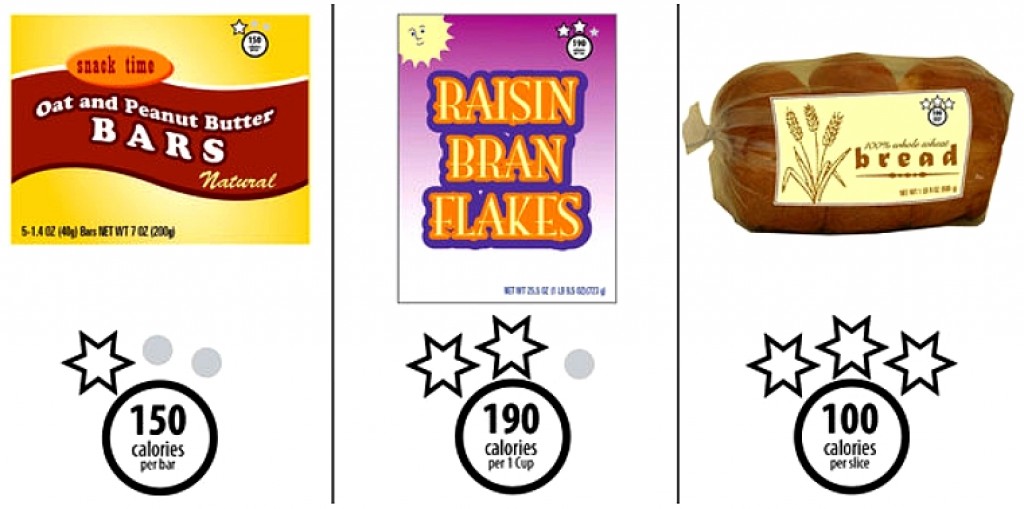
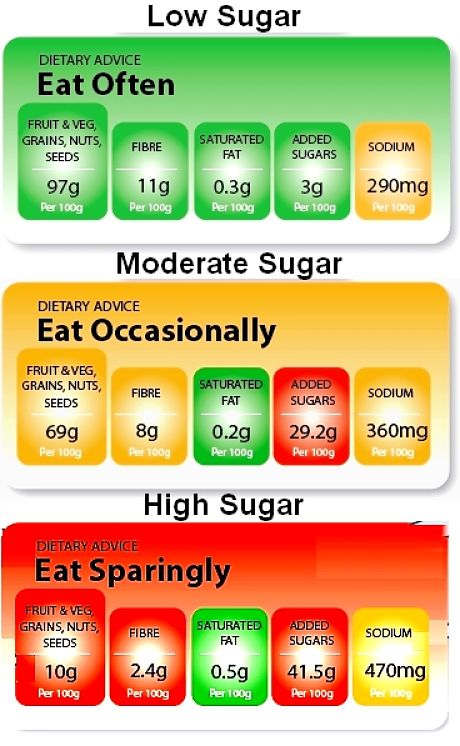
Sanatarium Health Foods System
This system shown above, has been developed by the Sanatarium Company in Australia. It combines the colour codings of red, anber and green, but focuses on a wider range of food components. The high sugar food are easily identified. The color codings are also applied to the various components which provide a good basis for making healthy choices.
Fuel Gauge Food Meal Label System
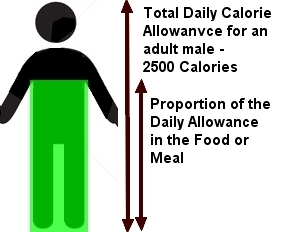
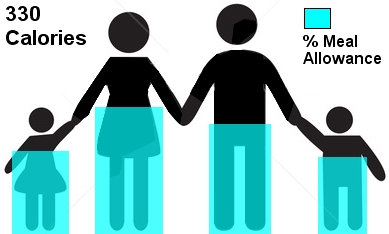
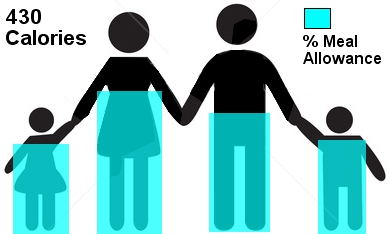
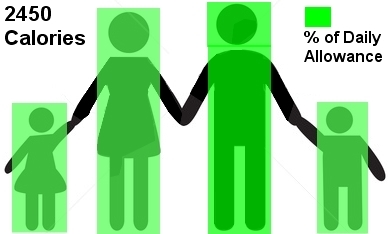
This system is focus on providing a visual way of seeing what a meal at a fast food outlet represents in terms of daily food allowances.
Research has shown that most people don't understand calories - particularly the concept of a daily food allowance. See: New Food Label Uses a Fuel Gauge Concept for Daily Calorie Allowances
Different gauges are applied for men, women and children because they have different Total Daily Allowances. The average daily calorie allowances depend on body weight and activity level but the average values are:
- Men = 2,500 kcal (Calories)
- Women = 2,000 kcal (Calories)
- Children aged 5-10 = 1,800 kcal (Calories)
Meal allowances are one-quarter to one third of the daily allowance.
Shown to the right are various example for foods with increasing calorie contents -green for daily allowance and blue for meal allowance. Obviously children and women 'fill-up' first because they have lower daily calorie needs.
Shown below is an example of how this system could be used to compare high calorie and healthy choices in various fast-food outlets.
It is alarming to note that many single meals provide a large proportion of the TOTAL Daily Calorie Allowances even for men. One meal provides all the calories for an entire day!
A single meal can exceed the calories required for a whole day.
These labels could help people make healthy choices without having to count calories.
Clearly people should be aware of the dangers of eating such big meals.
